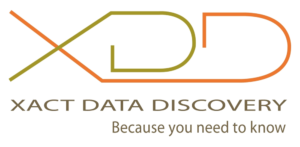Cryptocurrencies have exploded in number and popularity over the last few years, and legal practitioners need to start familiarizing themselves with the essentials
by Matthew Verga, JD, Xact Data Discovery
In the first Part of this series on what legal practitioners need to know about cryptocurrency, we discussed the recent explosive growth and diversification in cryptocurrencies and reviewed what they actually are. In this Part, we discuss how cryptocurrencies work and why people use them.
Two: How It Works
As noted in the first Part, cryptocurrencies are built using blockchains, but what is a blockchain? A blockchain is a special kind of public, shared database. The database is shared peer-to-peer, and since it’s stored in many places at once, it has no single point of failure. The database is updated through the addition of new sequential “blocks” of data that are linked together. Each new block’s accuracy and timestamp are verified by other users in the peer-to-peer system before it gets added to the chain. Once a block is added through this process, it is practically unchangeable. Since blockchains contain a complete history of every transaction executed through them, they get longer and larger over time. For example, back in August 2014, the blockchain for Bitcoin was only around 20 gigabytes in size, but by December 2017, it had reached around 149 gigabytes in size.

